Scarlet Tanager: The Fiery Color-Changing Songbird of the Forest
Meet the Scarlet Tanager
With their blazing red plumage and jet-black wings, Scarlet Tanagers are like living embers fluttering through the treetops. But there’s more to these stunning songbirds than just their looks — from epic migrations to unexpected color shifts, the Scarlet Tanager is one of North America’s most fascinating forest dwellers.
Whether you’re an avid birder, a backyard habitat builder, or simply someone who loves colorful wildlife, this brilliant little bird is sure to leave a lasting impression.
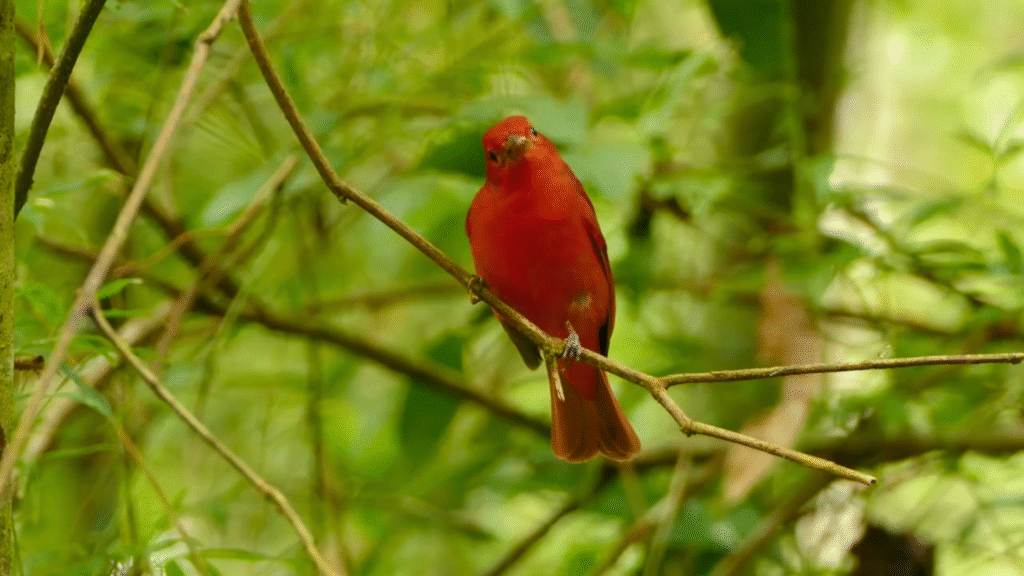
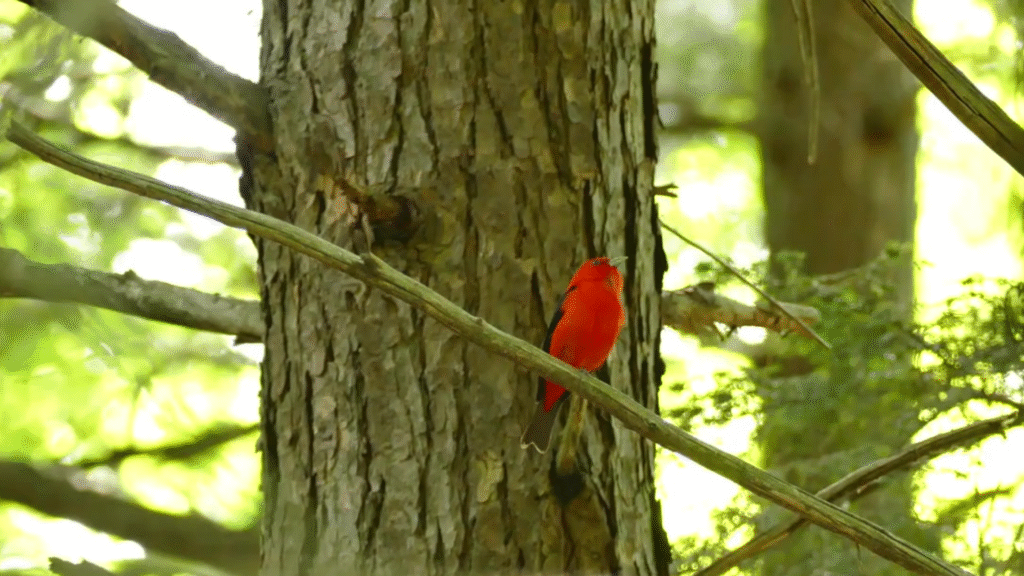
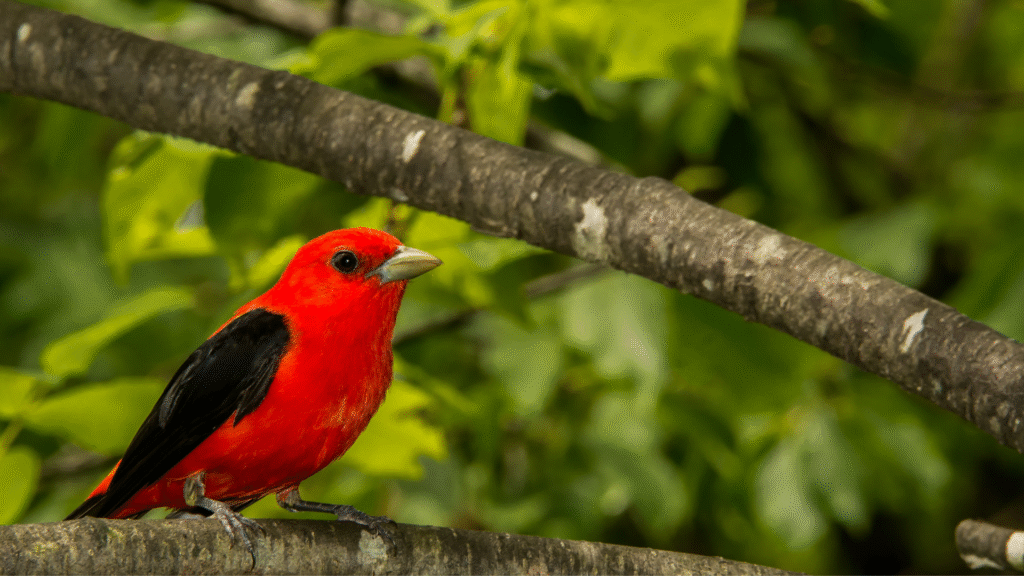
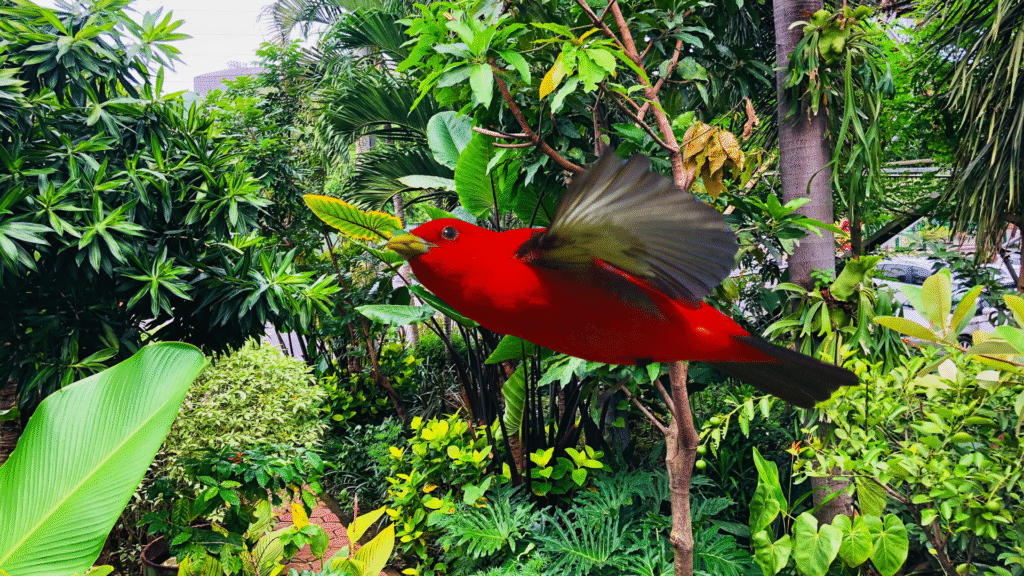
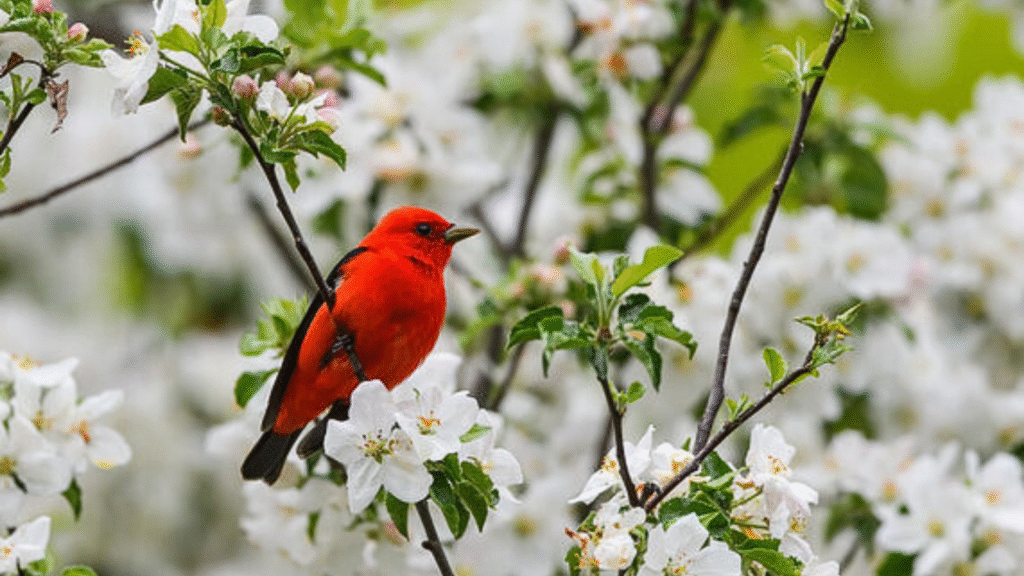
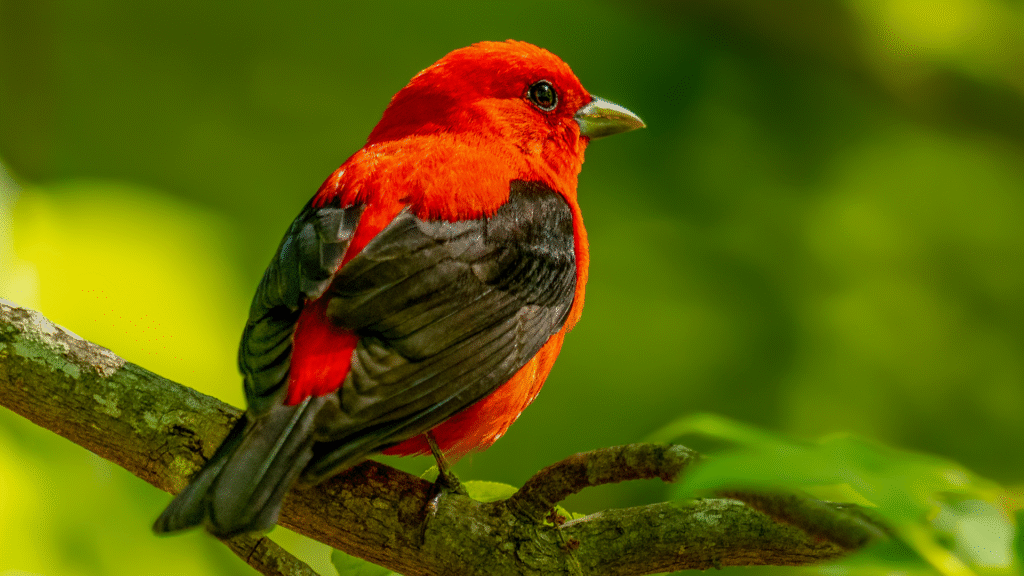
Species overview
- Common Name: Scarlet Tanager
- Scientific Name: Piranga olivacea
- Family: Cardinalidae (Yes — they’re more closely related to cardinals than other tanagers!)
- Status: Least Concern (but tricky to spot due to their shy, treetop-loving nature)
- Lifespan: Typically 5–6 years in the wild; up to 10+ years for the lucky ones
Habitat
Scarlet Tanagers prefer tall, mature deciduous forests filled with trees like oak, beech, and maple. You’ll most often find them in the eastern U.S. during spring and summer, especially along the Midwest, East Coast, and Appalachian Mountain range.
When fall arrives, these tiny adventurers head south — traveling thousands of miles to winter in the lowland rainforests of South America, including Colombia, Ecuador, Bolivia, and Peru.
They migrate mostly at night, navigating by stars, magnetic fields, and even scent cues. No GPS. Just instinct.
Diet
Scarlet Tanagers are insect lovers at heart. Their favorite snacks include:
- Beetles, ants, wasps, and caterpillars
- Spiders and soft-bodied bugs
- Wild fruits like mulberries and elderberries (especially during migration)
If you’re creating a backyard space to support native wildlife, planting shrubs like mulberry or elderberry can provide excellent food for tanagers and other songbirds.
Mating and raising young
In the world of tanagers, the female handles most of the hard work.
She builds a loose, cup-shaped nest high in the trees — usually 15 to 50 feet above the ground — using twigs, grasses, pine needles, and even animal hair.
She lays 3 to 5 pale blue or greenish eggs, speckled with reddish-brown spots. The male stays nearby, singing and guarding the area. Once the chicks hatch, both parents pitch in, delivering a steady stream of insects to the nestlings.
The babies grow fast — fledging in just 9 to 12 days!
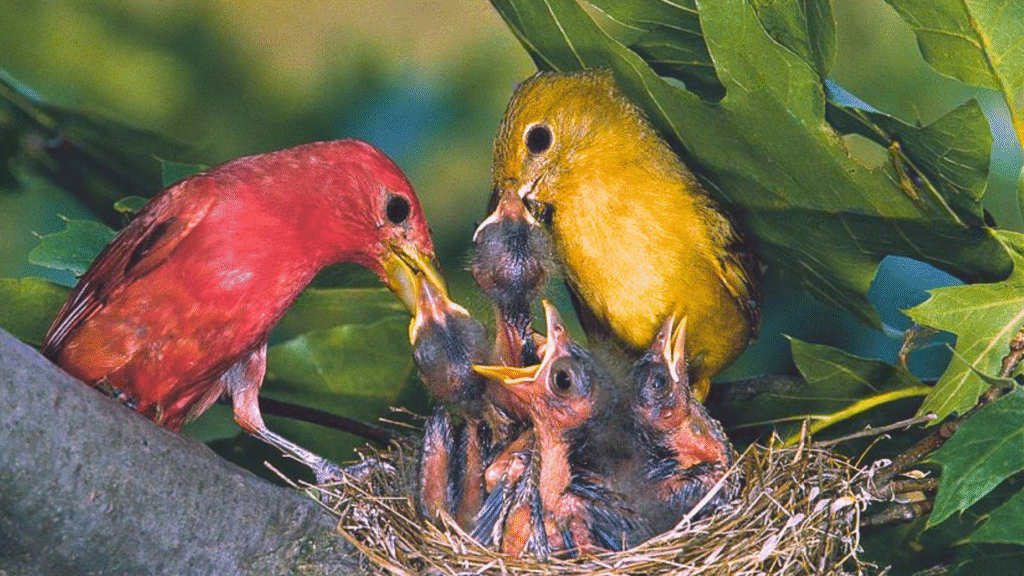
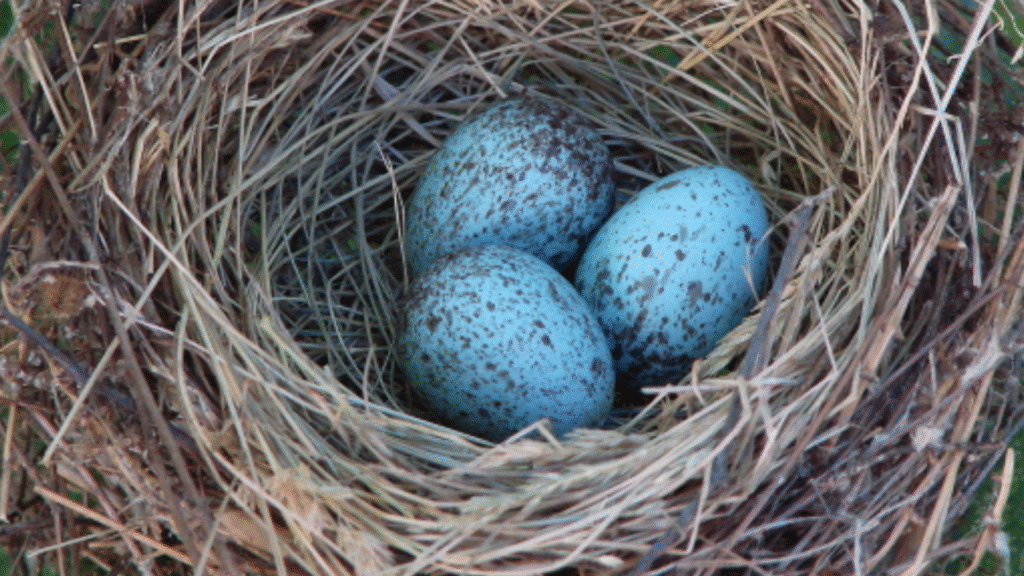
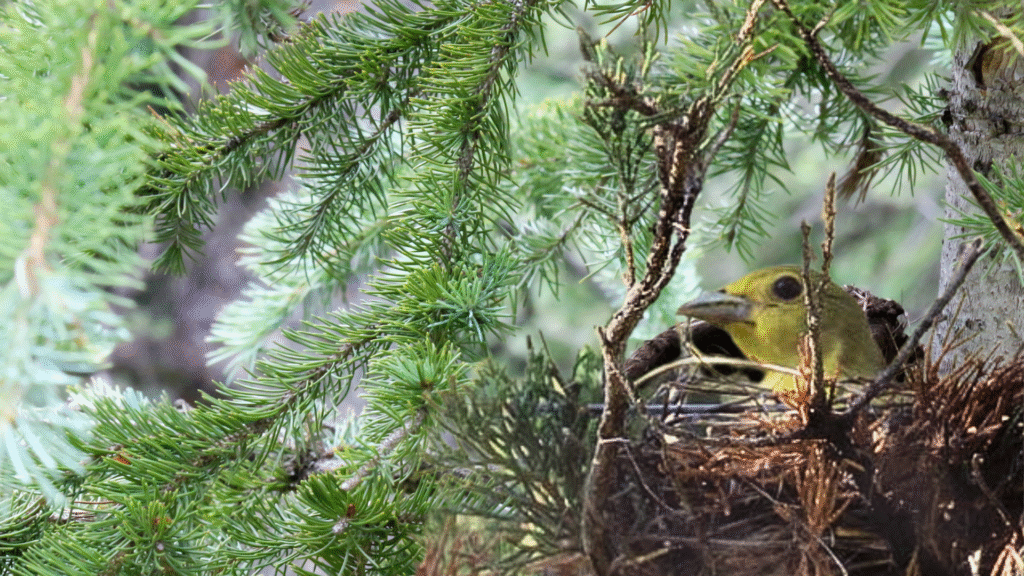
Fun facts about Scarlet Tanagers
- Males molt after breeding season and lose their fiery red plumage, turning olive-yellow for better camouflage in winter.
- They’re hard to spot! Scarlet Tanagers stick to the upper canopy and prefer staying hidden in sun-dappled leaves.
- Their song is often described as a “robin with a sore throat” — raspy, yet sweet.
- Despite the name, they’re now classified in the cardinal family, not the true tanagers of South America.
- Their migration spans thousands of miles, guided by instinct alone.
Why we love Scarlet Tanagers
Scarlet Tanagers are more than just beautiful — they’re resilient, resourceful, and deeply connected to the health of our forest ecosystems. They help control insect populations, add vibrant color to the treetops, and reward patient observers with unforgettable sightings.
They’re also a powerful reminder that supporting wildlife starts at home — by planting native trees, avoiding pesticides, and protecting tall forest cover, we can help birds like the Scarlet Tanager thrive.
Want to make your backyard more inviting for birds like these?
🌿 Start here: How to Create a Wildlife-Friendly Backyard Habitat
Explore more
- Our favorite binoculars for backyard birdwatching
- Eastern U.S. birding field guide we love
- Native mulberry shrubs to attract fruit-loving birds
Note: Some links may be affiliate links — they cost you nothing but help support BearBunk!
Conclusion
The Scarlet Tanager is a fire-colored flash of wild wonder — a bird that changes with the seasons, crosses continents, and plays a small but mighty role in the balance of nature.
So the next time you’re walking under tall trees in late spring or early summer… stop and look up. That red spark in the canopy just might be a Scarlet Tanager.
Want to learn more about incredible birds and wildlife? Explore the Birds and North American Wildlife sections here on BearBunk and take your curiosity to new heights!
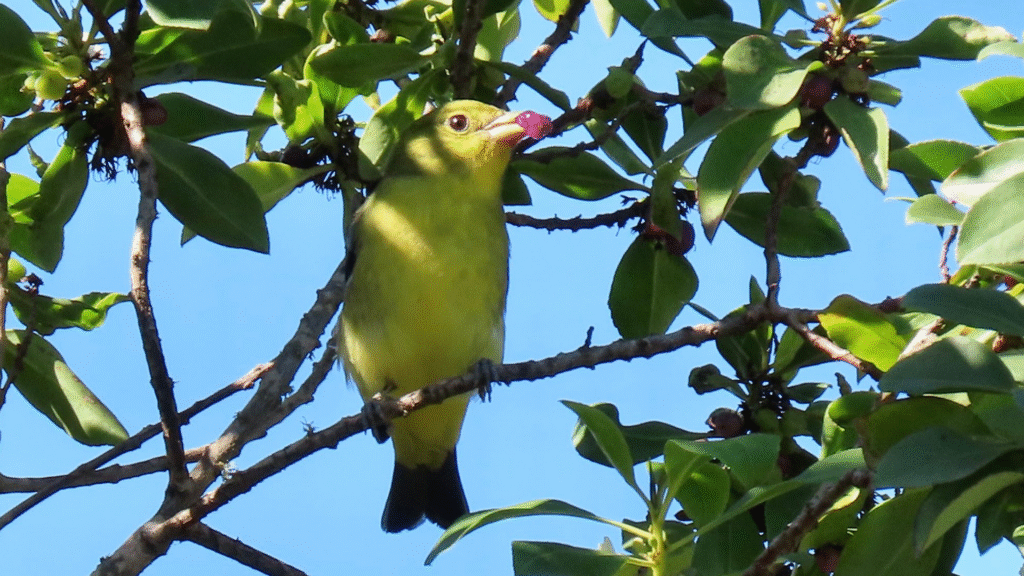
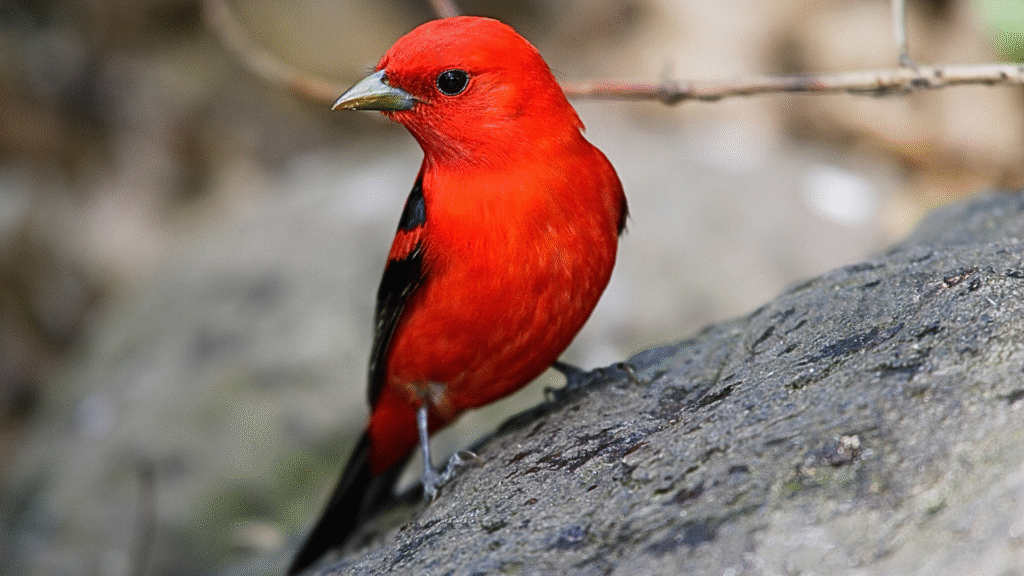
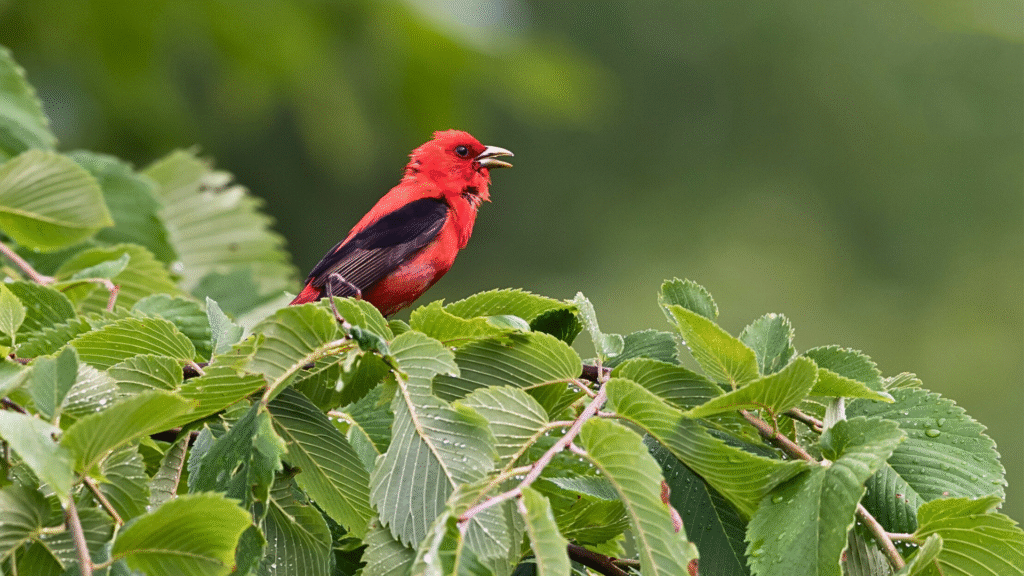
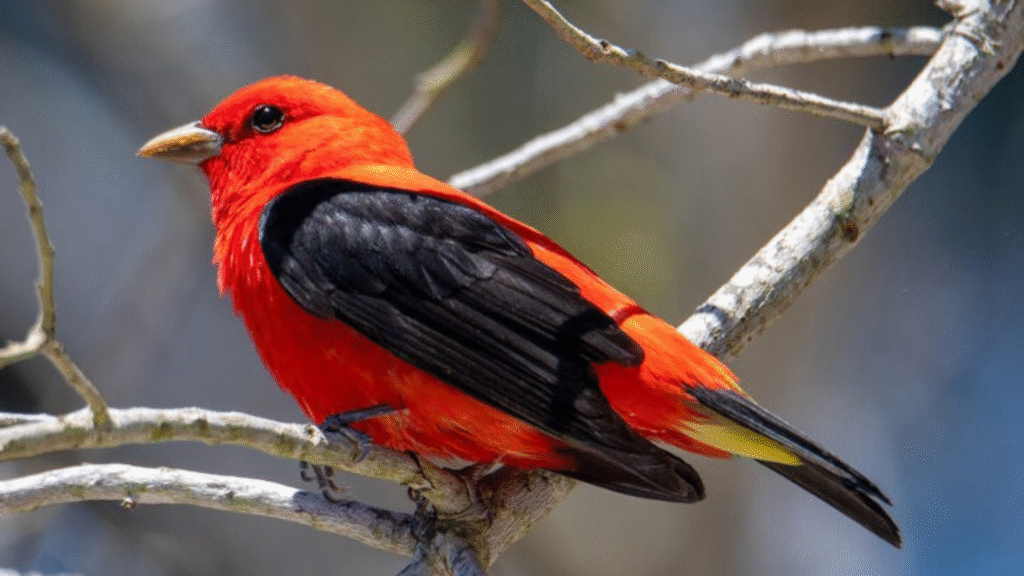
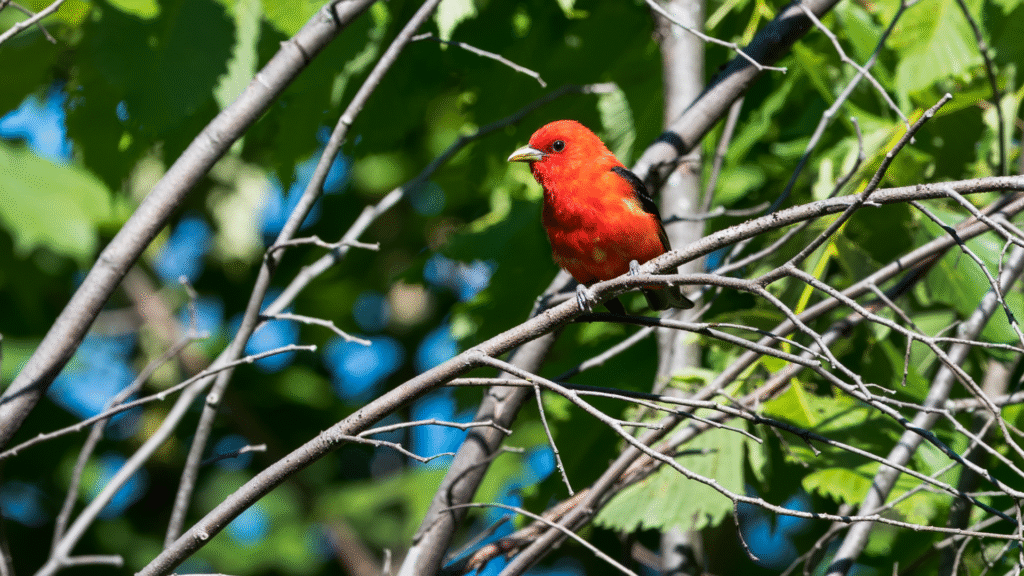
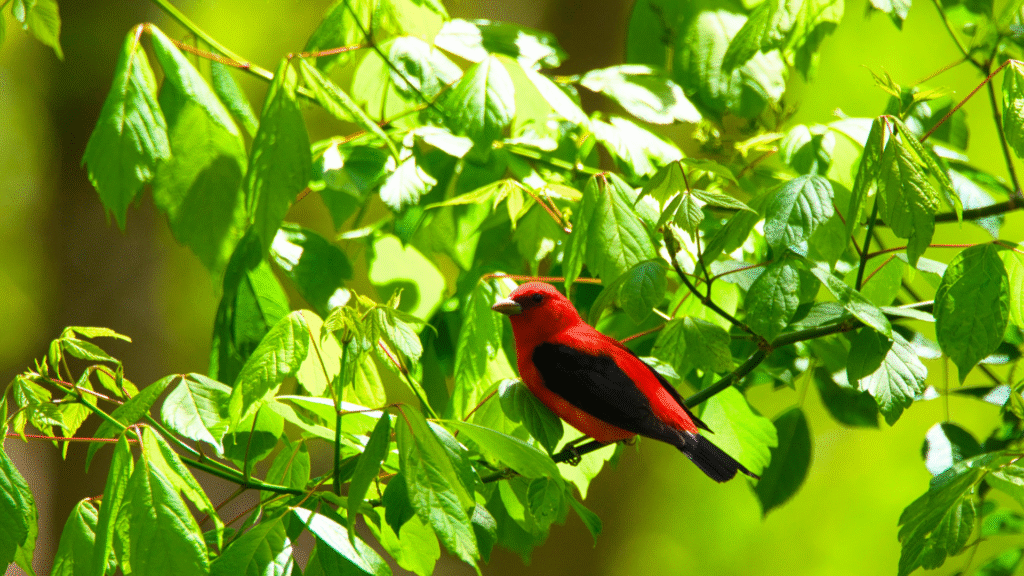






Leave a Reply